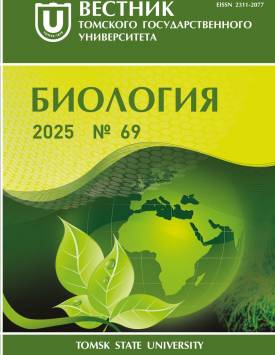Global warming and the genetics of wheat type and rate of development
Agricultural production in the XXI century has faced significant environmental challenges, the most important of which is global and local climate change. To solve the problems it is necessary to produce new varieties of crops, and first of all, common wheat (Triticum aestivum L.). Variation in the duration of ripening period is an important element of wheat adaptability to specific cultivation conditions. The question of whether a variety that is early in earing date remains early in maturity date is essential, but data on this problem are rather limited. Thus, to produce new early maturing forms of spring common wheat, it is worth paying attention to the sources of alleles used in the southern regions of Russia or abroad. The aim of our investigation was to evaluate a collection of common spring wheat accessions for the duration of the growing season and allelic composition of the Vrn-A1 (response to vernalization) gene. In this study, 8 cultivars of spring common wheat and 2 control near-isogenic lines were used (See Table 1). The studied accessions were grown in hydroponic greenhouse. To extract genomic DNA from the collected samples, 30-80 mg of leaves frozen in liquid nitrogen were used. DNA extraction was performed using a commercial kit “Wizard® Genomic DNA Purification Kit” (Promega, USA) according to the manufacturer's protocol. The Vrn-A1 locus polymorphism study was performed using a set of previously described allele-specific primers. Confirmation of the presence of a deletion into the Vrn-A1 gene promoter or insertion of a mobile genetic element was performed using Sanger sequencing. As a result of these studies, it was found that five cultivars had an insertion of a mobile genetic element in the promoter of the Vrn-A1 gene and were characterized by the presence of a fragment of 965 bp in length on electrophoresis, while three cultivars showed a deletion in the promoter sequence. When PCR products were electrophoresed, cultivars with deletion showed a fragment of 714 bp in length (See Fig.1). The results were also confirmed by Sanger sequencing. Correlation analysis applied to establish the dependence of earing time on the allele of the Vrn-1 gene showed a value of r = 0.57, which allows us to conclude that the allele of the Vrn-1 gene is moderately correlated with the duration of shooting to heading period. The duration of the growing period, and, consequently, early maturity, is related to the transition from vegetative to generative development. In wheat, the complex process of transition from vegetative to generative development is largely determined by allelic diversity of Vrn genes regulating the type of growth (spring vi. winter). In the course of investigation on the study of Vrn-A1 gene polymorphism, the prevalence of the Vrn-A1 allele, the occurrence of which is due to the presence of an insertion of a mobile genetic element, was found not only in varieties of Novosibirsk breeding, but also in commercial cultivars from other regions. The article contains 1 Figure, 1 Table, 5 References. The Authors declare no conflict of interest.
Keywords
Triticum, phenology, earliness, breeding, West Siberia, Vrn-A1 geneAuthors
| Name | Organization | |
| Goncharov Nikolay P. | Institute of Cytology and Genetics, Siberian Branch of the Russian Academy of Sciences | gonch@bionet.nsc.ru |
| Plotnikov Kirill O. | Institute of Cytology and Genetics, Siberian Branch of the Russian Academy of Sciences | ko.plotnikov@bionet.nsc.ru |
| Chepurnov Grigory Y. | Institute of Cytology and Genetics, Siberian Branch of the Russian Academy of Sciences | grigory.tchepurnov@yandex.ru |
| Kamenev Ilya A. | Novosibirsk State Agricultural University | ilya.kamenev.1441@bk.ru |
| Nemtsev Boris F. | Siberian Research Institute of Plant Growing and Breeding - branch of Institute of Cytology and Genetics of the Siberian Branch of the Russian Academy of Sciences | nembor@yandex.ru |
| Smolenskaya Svetlana E. | Institute of Cytology and Genetics, Siberian Branch of the Russian Academy of Sciences | morpha@bionet.nsc.ru |
| Blinov Alexander G. | Institute of Cytology and Genetics, Siberian Branch of the Russian Academy of Sciences | blinov@bionet.nsc.ru |
References

Global warming and the genetics of wheat type and rate of development | Vestnik Tomskogo gosudarstvennogo universiteta. Biologiya - Tomsk State University Journal of Biology. 2025. № 69. DOI: 10.17223/19988591/69/8
